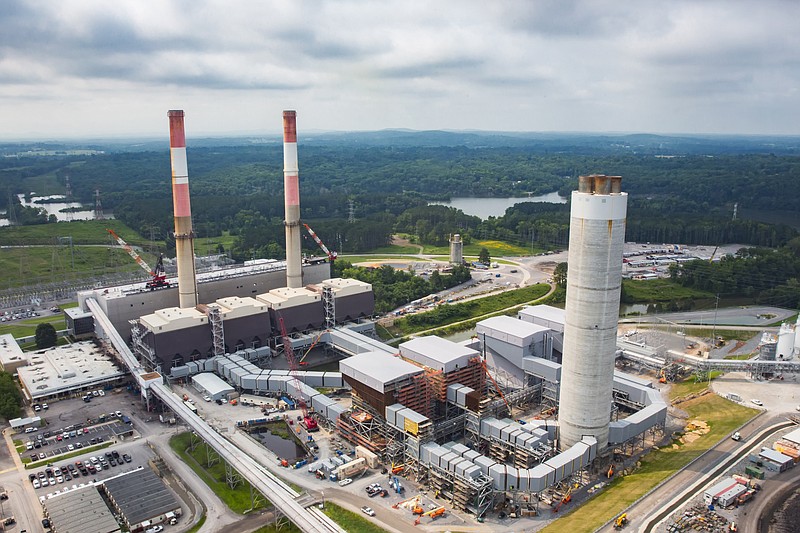The Tennessee Valley Authority has completed the installation of scrubbers at its Gallatin Fossil Plant to cut certain smog emissions from the coal plant by up to 98 percent.
The last of four new coal scrubbers added to the Middle Tennessee power plant went into operation this week, culminating nearly three years and $730 million of construction work. TVA is installing similar dry scrubber devices at its Shawnee Fossil Plant in Kentucky.
With the scrubbers in place at Gallatin, TVA is now focusing on a $370 million installation of selective catalytic reduction (SCR) devices to cut nitrogen oxide emissions from the Middle Tennessee plant. The first two SCRs will be operational in the spring of 2017 and the final two in the fall of 2017.
TVA previously added three other scrubbers on Gallatin units last year and expects to complete process tuning and emission performance testing on all the new equipment prior to an April 16 compliance date set by the U.S. Environmental Protection Agency.
"We appreciate the hard work of all the TVA employees and contractors who expended over 4 million work hours to meet the schedule milestones for the Gallatin Fossil dry scrubber project," Ron Nash, director of TVA's clean air program, said in a statement Monday. "With all four units now online, our focus is on process tuning and optimization to ensure the units are meeting all federal and state requirements for particulate, sulfur dioxide and mercury removal efficiently and effectively. "
Bob Deacy, senior vice president for generation construction, projects and services in TVA's Fossil Fuel division, said Gallatin "met the schedule and the budget."
TVA is installing dry scrubbers at Gallatin in Middle Tennessee and another TVA coal plant at Shawnee in West Paducah, Ky.
Previously, TVA has employed wet scrubbers. But the new dry scrubbers remove 98 percent of the sulfur dioxide (SO2) that exits through the exhaust flue and the resulting byproduct is dry, making it possible to store in a landfill.
"The byproduct material that's generated from this dry scrubber is a combination of fly ash and pebble lime and a little water," said Larry Nathan, senior project manager for the Gallatin dry scrubber project.
Last year, the Tennessee Department of of Environment and Conservation and the Tennessee Attorney General sued TVA because coal ash produced at Gallatin in the past was seeping into groundwater and the Cumberland River. TVA and environmental groups continue to dispute how to best dispose of the fly ash and other coal residues left from the operation of the Gallatin plant, which began generating col-fired electricity nearly 60 years ago.
The Gallatin dry scrubber project started in 2011 with a design phase that lasted about a year. Ground was broken on the project in March of 2013. As many as 1,300 construction workers were on site during the peak construction phase.
The Gallatin dry scrubber project features NID technology, which stands for novel integrated desulfurization. Each unit includes a bag house containing 9,600 bags along with a pulsed air cleaning system.
"The pulsed air cleans the bags, forcing the particles from the bag down into a hopper where they are collected, and then transferred to a byproduct silo," Nathan said. "From the silo, they are transferred by truck to a landfill."
TVA is phasing out 7,000 megawatts of coal-fired generation across its 7-state region from the peak at TVA a decade ago when 59 coal-fired units supplied nearly two thirds of TVA's electrical generation. Although 18 TVA coal units have or soon will be shuttered, TVA is keeping and upgrading major coal plants such as Gallatin.
The 976-megawatt Gallatin plant burns 130,000 tons of coal a day and produces enough electricity to power about 300,000 homes.
